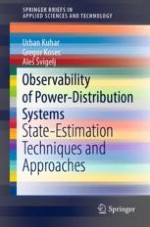This book develops, implements and thoroughly evaluates a three-phase distribution system state estimation (DSSE) model. It gathers all relevant state-of-the-art knowledge and provides the missing pieces to offer readers a complete picture of several essential design and implementation factors and ways to address them.
The book presents a three-phase branch model that allows of conductors, transformers, tap changers, and voltage regulators to be modelled. Its main features include:
• modelling of all major power distribution components;
• sensitivity analysis; and
• numerical solution to the estimation problem.
This book presents a focused account of three-phase DSSE, making it of interest to postgraduate students, researchers and engineers in the field of power systems and distribution systems.
